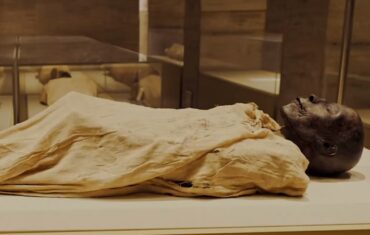Kom-Ombo
30 kilometers from Aswan, the lifeless hills of the Eastern desert recede from the banks of the Nile river. On the land recaptured from the desert, rich crops of sugarcane are grown. Here, the city of Ombos stood at the intersection of caravan routes from Nubia and the gold mines of the Eastern desert.
Under Ptolemy VI (180-145 BC), it became the capital of the first nome and a place for training military African elephants, which were needed by the Ptolemies for wars with the Seleucids. For the tourists, its name is associated with the Hellenistic temple of Sobek and Haroeris. Unlike the other temples of the Nile valley, it stands directly on the river Bank – one of the best views to be seen while traveling by felucca.
Useful information about Kom-Ombo
The Egyptian city of Kom Ombo is located about 60 kilometers south of the city of Edfu, next to the road that runs along with the Eastern Bank and connects Luxor (170 kilometers) and Aswan (45 kilometers). Since the temple is located 4 kilometers from the city, it is better to get here by pleasure boat or felucca, without burdening yourself with the hassle associated with other modes of transport.
Tourist buses and taxis are allowed to travel only in convoys with escorts, minibusses from Luxor or Aswan are forbidden to use, so people traveling independently can only rely on buses or trains running between Luxor and Aswan with a stop in Kom Ombo.
The temple of Haroeris and Sobek in Kom Ombo
The temple of Haroeris and Sobek (daily, 7:00-17:00; 40 pounds) stands on a ledge of the riverbank, on the sandbanks of which in ancient times crocodiles loved to bask in the sun. Its proximity to the Nile both helped preserve and destroy the monument: sand deposits saved it from the iconoclastic Copts, but at the same time water destroyed the pylon and the forecourt and now washes away the bases of the columns inside the temple. Amelia Edwards very aptly compared the ruins of the temple to the torso of a beautiful ancient statue: the temple, reduced in size and without a roof, has not lost its grandeur and retains traces of the original painting.
A distinctive feature of the temple is its symmetry with respect to the longitudinal axis. It has two entrances, paired shrines, and halls divided into two halves. The left half of the temple is dedicated to the Falcon God Haroeris, “the Good healer” (hypostasis of Horus the Elder), and his wife TA-sen-Nefer, “the Good sister” (Hathor). The crocodile God Sobek (here associated with the sun as Sobek-RA), his wife (another hypostasis of Hathor), and son Khonsu-Hor were worshipped in the right part of the temple.
Visitors enter the temple at an angle to the main axis, through the Neos Dionysus gate. Only half of the gate remains, and the date of its construction is not certain, as scholars disagree about the number of Ptolemaic kings, as well as the order and Dating of their reign. All Ptolemies adopted additional nicknames – such as Soter (Saviour), Euergetes (Benefactor), or Philometor (mother Lover).
Some scholars believe that Neos Dionysus is Ptolemy XII, others believe that it is Ptolemy XIII, but all agree that he was the father of Cleopatra, ruled with a gap of three years (80-58 and 55-51 BC) and had the nickname “the Bastard”. Before entering the temple, you can look into the Hathor oratory and see three mummified crocodiles found nearby in the 1970s during road works.
Once you enter the courtyard (built by Trajan in 14 AD), from which only the low walls and stumps of columns remained, you will immediately notice the facade of the hypostyle. Columns with flower capitals support a powerful block of the cornice with a reverse twist, over each of the entrances there are winged solar disks and uraeus. Bas-reliefs on the outside of the walls depict the Neos Dionysus, over which the Latter and the Choir perform a purification rite. The same scene occurs in the presence of Sobek, whose face was subsequently knocked down.
Passing through the thicket of columns of the outer hypostyle, pay attention to the images of heraldic plants carved on their bases – the Lotus of Upper Egypt and the papyrus of the Delta. On the inside of the facade wall, there are magnificent compositions: the coronation of Neos Dionysus in the presence of Haroeris, Sobek, Ouajit, and Nekhbet (goddesses of the North and South) and his appearance in the presence of Isis, Horus the Elder, and the Sekhmet – lion-headed deity. To the same deities, Neos Dionysus gives offerings in the far part of the hall, where part of the ceiling remains, decorated with figures of winged vultures.
At the entrance to the more ancient inner hypostyle, you will find relief with the image of Sobek in his animal form (between the doorways). In the South-Western corner of the hall, Ptolemy II receives the khepesh (victorious sword), next to the king is his sister and wife with the same names – Cleopatra). The same king is depicted on the columns offering gifts to the gods, his elder brother in front of the Haroeris – on the back wall, lists of deities and temple festivals are placed between the doorways.
The vestibules and the sanctuary of the temple
Then there is the first of three lobbies (each one slightly higher than the previous one), which were decorated during the reign of Ptolemy VI. Reliefs on the back wall depict the temple’s founding ceremony – Seshat, the goddess of writing, measures its territory-and offerings and libations in honor of Sobek. These rites were repeated periodically in order to maintain the ritual purification of the place. The next vestibule, the hall of offers, was reserved for priests only. A dilapidated room on the right had once been used to store vestments and sacred texts. Scenes of sacrifice to Haroeris, a description of the temple, and prayer to Sobek are preserved on the southern wall, and a tiny relief image of a woman giving birth is preserved here. Also, pay attention to the figures that are painted on the ceiling. A magnificent relief, located between the doors of the sanctuaries, depicts Ptolemy and his wife-sister next to a palm tree, on which hangs the sign Heb-sed, indicating the years of the king’s reign.
The king is honored by Khonsu, crowned with a blue Crescent and a red disk, as well as Haroeris and Sobek (symbolizing air and water respectively), while Ptolemy himself sports a Macedonian cloak. Little remains of the sanctuaries themselves, but this allows a glimpse of the secret corridor between them. It is thought that the priest would speak for the gods from here. The corridor’s entrance is through an underground crypt in the central shrine in the northern inner corridor.
The outer corridor and surroundings of the temple
The flagstones of the outer corridor between the Hellenistic temple and the Roman walls are covered with inscriptions of pilgrims. This was how they passed the time before going to the Seelie healer, whose statue stood in a small niche behind the Central oratory. Carved on the walls, their ears listened to their prayers, and the images of their eyes symbolized the health they hoped to achieve.
These reliefs have almost been erased by the touch of many hands, while others are better preserved. One of the reliefs depicts Marcus Aurelius offering a pectoral to TA-Saint-Nefer, The “Good sister”. Other images attest to the high development of surgery almost 2 thousand years ago: here are depicted medical instruments-a scalpel, suction, a medical saw, and accessories of a dentist.
Worth visiting in the temple grounds is the Sacred Well just west of the Outer Hypostyle Hall. This large round well has two stairways descending to its depths and was used as a Nilometer: priests would calculate taxes for the year by measuring the depth of the Nile.
A small pool nearby was used for raising sacred crocodiles. In the Chapel of Hathor near the entrance are three crocodile mummies, which were uncovered during nearby roadworks in the 1970s.
The Birth House of Ptolemy VII was mostly washed away by the Nile in the 19th century, but a doorway remains intact. See the Edfu Temple for an example of a surviving birth house, which was an element unique to Ptolemaic temples. A few faint reliefs can still be seen, including one showing Ptolemy IX and two gods in a papyrus thicket, observed by an ithyphallic Min-Amun-Re holding lettuce (symbolizing fertility).


